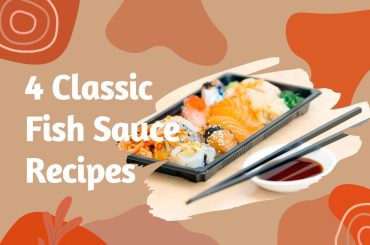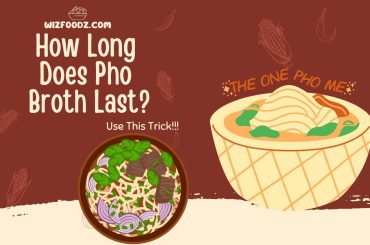Unagi sauce— that magical, dark, thick syrup that elevates your grilled eel or sushi to the next level. A tangy and sweet elixir, it has the power to make your taste buds dance and add depth to various dishes.
But did you know you can make this culinary wonder at home? No, you don’t need a culinary degree or magical powers; you just need a few essential ingredients and a burning love for good food.
Making unagi sauce at home is like putting together a puzzle; each piece brings its own charm, contributing to a beautiful and complete picture. You might wonder why you should invest the time to make it from scratch.
Aside from the deliciousness factor, there’s a unique joy in concocting your own version of something you usually buy off a shelf. It’s like being an alchemist in your own kitchen, transforming everyday items into liquid gold.
The Culinary Heritage and Significance
Unagi sauce finds its roots deep in Japanese cuisine. In Japan, it’s traditionally used as a glaze for grilled eel dishes like “Unagi no Kabayaki” and “Unadon.” But don’t be confined by tradition! This sauce is truly versatile, and modern chefs are using it in innovative ways. It can be a dip for sushi rolls, a marinade for grilled meats, or even a dressing for vegetable stir-fries.
While making it at home, you’re not just cooking; you’re preserving a rich culinary tradition and giving it your personal touch. For instance, some people like to add a dash of ginger for a twist, while others may intensify the sweetness by incorporating more mirin.
When you make it at home, you have the liberty to customize it to your palate, making the sauce uniquely yours.
The Time-Tested Ingredients
You only need four primary ingredients to make your own unagi sauce: soy sauce, mirin, sake, and sugar. These are the foundational blocks, each bringing its own unique quality to the mix:
- Soy Sauce: This is the backbone of the sauce, providing the primary salty and umami characteristics.
- Mirin: A type of rice wine, mirin adds a sweet, tangy dimension.
- Sake: Another rice wine, but less sweet than mirin, sake contributes to the complexity of the flavors.
- Sugar: Plain old sugar fine-tunes the sweetness and helps thicken the sauce.
Don’t worry if you’re not a frequent cook; these ingredients can be easily found at your local Asian grocery store or even online.
They’re not just for a one-time sauce-making adventure either; these ingredients are versatile and can be used in a variety of other recipes.
The Easy-as-Pie Recipe: From Novice to Unagi Sauce Maestro
Ready to take the plunge? Let’s dive right into it. Making unagi sauce is so simple; it’s almost like making a cup of tea but with a bit more simmering involved.
Ingredients:
- 1 cup soy sauce
- 1/2 cup mirin
- 1/2 cup sake
- 1/4 cup sugar
Steps:
- Combine Ingredients: In a saucepan, combine the soy sauce, mirin, sake, and sugar.
- Simmer: Bring the mixture to a simmer over medium heat.
- Reduce: Lower the heat and let the sauce simmer until it’s reduced by half. This should take about 30-45 minutes.
- Strain: If you’re a stickler for smoothness, you can strain the sauce through a mesh sieve.
- Cool and Store: Allow the sauce to cool before transferring it to an airtight container. It can be stored in the fridge for up to two weeks.
That’s it! You’ve made your very own unagi sauce! As you dip your spoon into this dark, luscious sauce, give yourself a pat on the back.
You’ve not only created something delicious, but you’ve also connected with a culinary tradition that’s been cherished for generations.
The Emotional Bond: Unagi Sauce as Comfort Food
Let’s talk about comfort food. Yes, that magical category of foods that doesn’t just satiate hunger but also offers a kind of emotional nourishment.
For many, the warm, complex flavors of unagi sauce can trigger a sense of well-being, of nostalgia, or even a connection to a certain place or time. Maybe it takes you back to that family trip to Japan, or perhaps it reminds you of the first time you tried sushi at your local restaurant.
Making unagi sauce at home can elevate that comfort to a new level as you infuse it with your own unique energy and love.
When you cook something yourself, especially something like unagi sauce that simmers and reduces over time, you’re essentially pouring your patience and care into it. And let’s be honest; things somehow taste better when they’re made with love.
It might sound cheesy, but it’s absolutely true. Sharing your home-made unagi sauce with family and friends can be a beautiful act of love, allowing you to offer not just a meal but a comforting, shared experience.
Mastering the Craft: Tips and Tricks for the Perfect Unagi Sauce
While the basic recipe is pretty straightforward, there’s always room for improvement and customization. As you gain confidence in your unagi sauce-making abilities, you can experiment with variations.
Ever thought about adding a pinch of freshly grated ginger for a subtle spicy kick? Or how about a clove of minced garlic for that extra layer of flavor? The sky is the limit!
Final Thoughts
By now, you’ve got a beautiful jar of homemade unagi sauce sitting in your fridge. But the journey doesn’t end here. Every time you take that jar out—whether to glaze a piece of grilled eel, enhance a stir-fry, or elevate a sushi roll—you’re experiencing the purest form of culinary delight, powered by your own hands.
Home cooking isn’t just about following a set of instructions to reach an end goal. It’s an experience that can be enriching, satisfying, and deeply personal. It opens doors to new cultures, traditions, and a more intimate relationship with what’s on your plate.
So the next time you share a meal featuring your home-made unagi sauce, remember, it’s not just food; it’s a piece of you.
Bon appétit!





